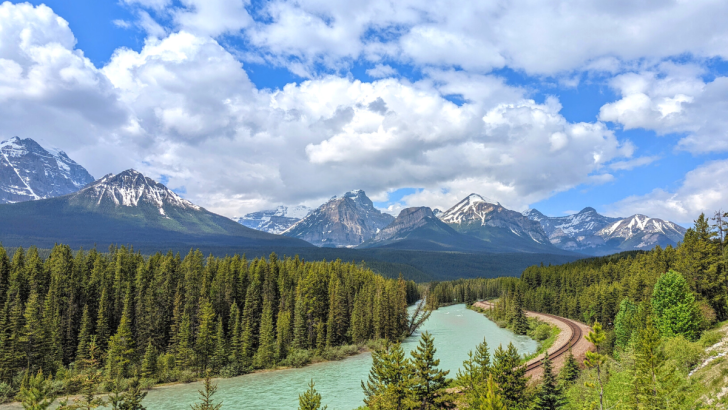Straight out of a Bob Ross painting, Morant’s Curve is an iconic and picturesque location nestled in the heart of the Canadian Rockies.
For train enthusiasts, photographers, and travelers seeking awe-inspiring vistas, this spot is a must-visit destination.
It’s one of the easiest spots to access for capturing photos of the most stunning mountain peaks in Banff.
Here is everything you need to know before making your way to Morant’s Curve in Banff National Park.
From its unique appeal to the frequency of passing trains, we’ve got you covered with all the essential tips and information.
This post contains affiliate links, meaning if you click through and make a purchase I may make a small commission. I only share information about things I know, love and trust!
What is the history of Morant’s Curve?

The history of Morant’s Curve is intertwined with the development and expansion of the Canadian Pacific Railway (CPR) during the late 19th and early 20th centuries.
The Canadian Pacific Railway played a crucial role in connecting Canada from coast to coast, and the construction of this vast railway network was a monumental engineering feat.
The curve itself is named after Nicholas Morant, a highly talented photographer who worked for the CPR during the mid-20th century.
Morant was known for his exceptional skills in capturing the beauty of the Canadian landscapes and the awe-inspiring trains that traversed the country.
The exact origins of the name “Morant’s Curve” are not entirely clear, but it is believed to have been given to the location as a tribute to the photographer’s exceptional work.
Nicholas Morant’s photographs were instrumental in promoting the Canadian Rockies and the scenic beauty of the region to the world.
His images, which often featured trains passing through the dramatic landscapes, garnered significant attention and admiration, further popularizing the area as a must-see destination.
A Fine Example of Railway Engineering
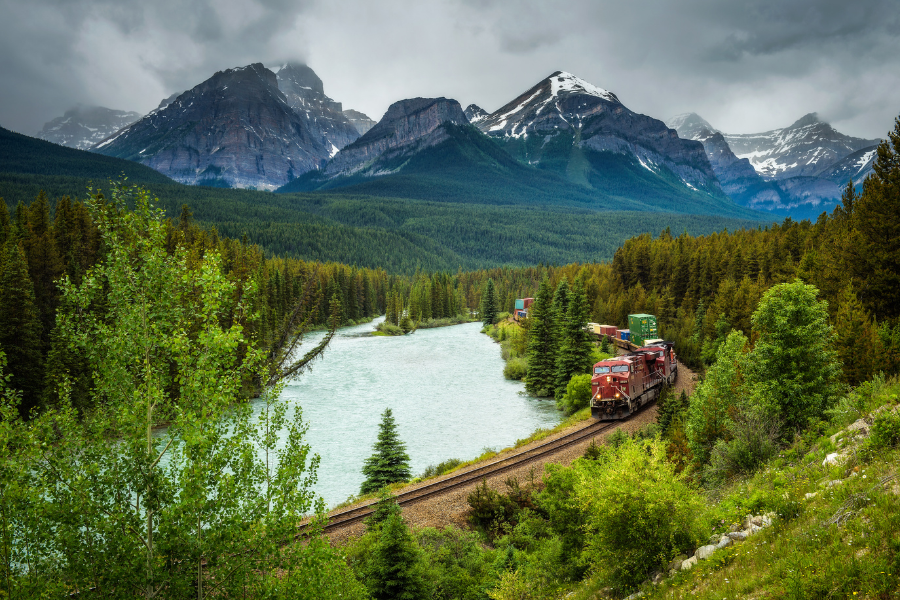
The curve itself is a remarkable example of railway engineering, where the tracks gracefully follow the natural contours of the landscape.
This design not only adds to the visual appeal but also serves a functional purpose, allowing trains to navigate through the challenging terrain more smoothly and safely.
Now an Iconic Spot Among Mountain Enthusiasts
Over the years, Morant’s Curve has become an iconic spot for railway enthusiasts, photographers, and tourists alike.
It has been featured in numerous books, magazines, and travel guides, attracting visitors from around the globe who seek to capture the magical combination of trains, mountains, and wilderness in a single frame.
Why Morant’s Curve is a Famous Photography Spot
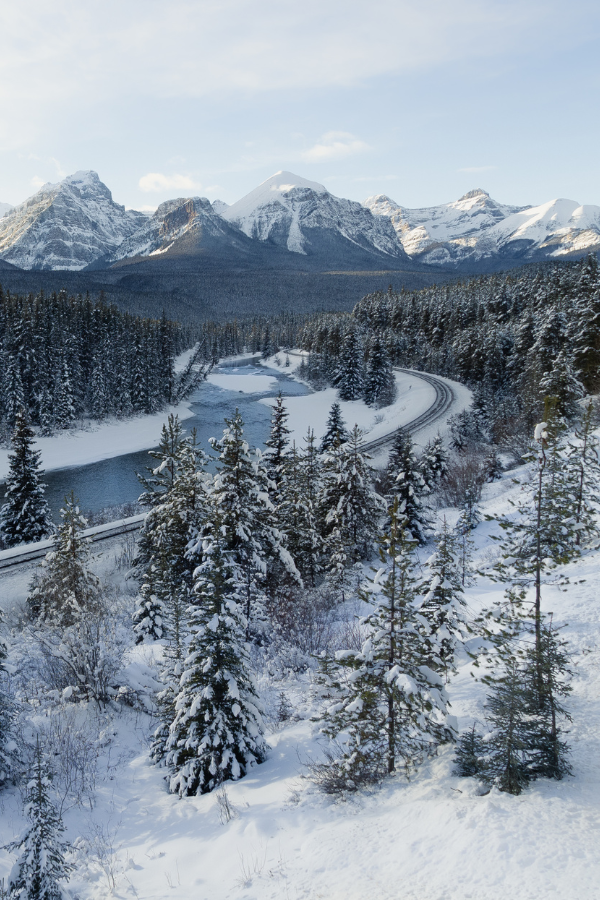
Morant’s Curve is renowned for its distinctive railway tracks, which gracefully hug the natural contours of the landscape.
The juxtaposition of the curving tracks against the grandeur of the mountains creates a mesmerizing composition, making it an ideal location to capture iconic train photographs.
Countless photographers and artists have immortalized this scene, further adding to its fame and allure.
How Often Do Trains Pass Morant’s Curve?
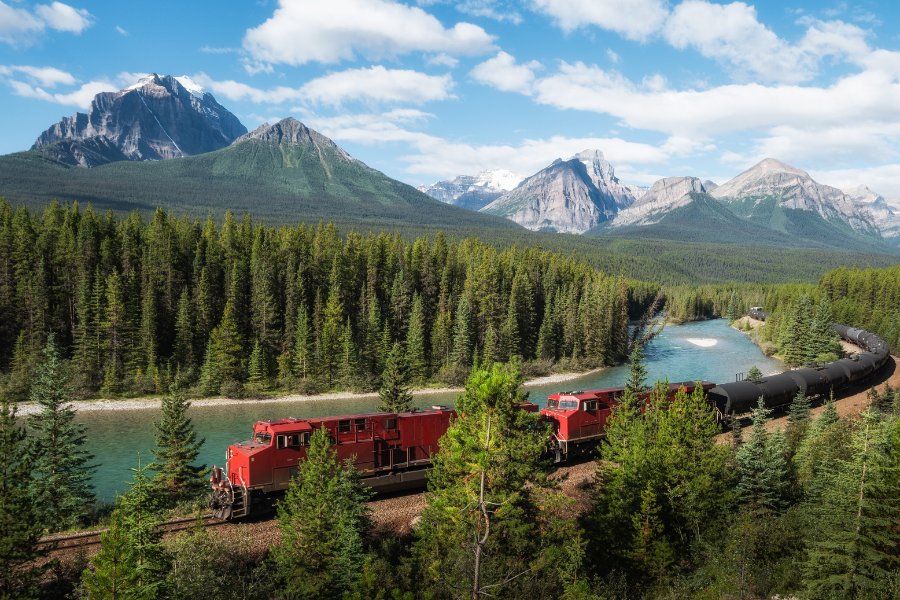
The timing and frequency of trains passing through Morant’s Curve is random. Trains do not pass through every 30 minutes, but you can expect to see one at least every 2 hours.
There is no set schedule for trains passing through Morant’s Curve, because these are commercial freight trains, not passenger trains.
Additionally, there are often delays as these heavy trains make their way through treacherous mountain passes.
Therefore, the chance of seeing a train at Moran’s Curve is unpredictable.
If seeing a train at Morant’s Curve is a must for you, expect to spend at least 1-2 hours here.
You will also have better luck on weekdays.
The best times to visit are usually early morning or late afternoon when the lighting enhances the scenery and adds a touch of magic to your shots.
Tips for Photographers and Visitors
For aspiring and seasoned photographers, capturing the perfect shot at Morant’s Curve requires careful preparation.
Bring along your favorite camera, a sturdy tripod, and a range of lenses to accommodate different compositions.
Since weather conditions can change rapidly in the mountains, dress in layers and be prepared for varying temperatures.
How to Get to Morant’s Curve

To get to Morant’s Curve, take Highway 1A west from Banff.
This road is also called the Bow Valley Parkway. You will reach it in about 45 minutes from the townsite of Banff.
If you’re coming from Lake Louise, Morant’s Curve is only a 10 minute drive down Highway 1A (Bow Valley Parkway).
Once you reach the Morant’s Curve viewpoint, there is a small parking lot that can hold about 8 vehicles.
There is a viewing platform across the highway that has been specially built to observe this iconic viewpoint in Banff National Park.
Accessibility
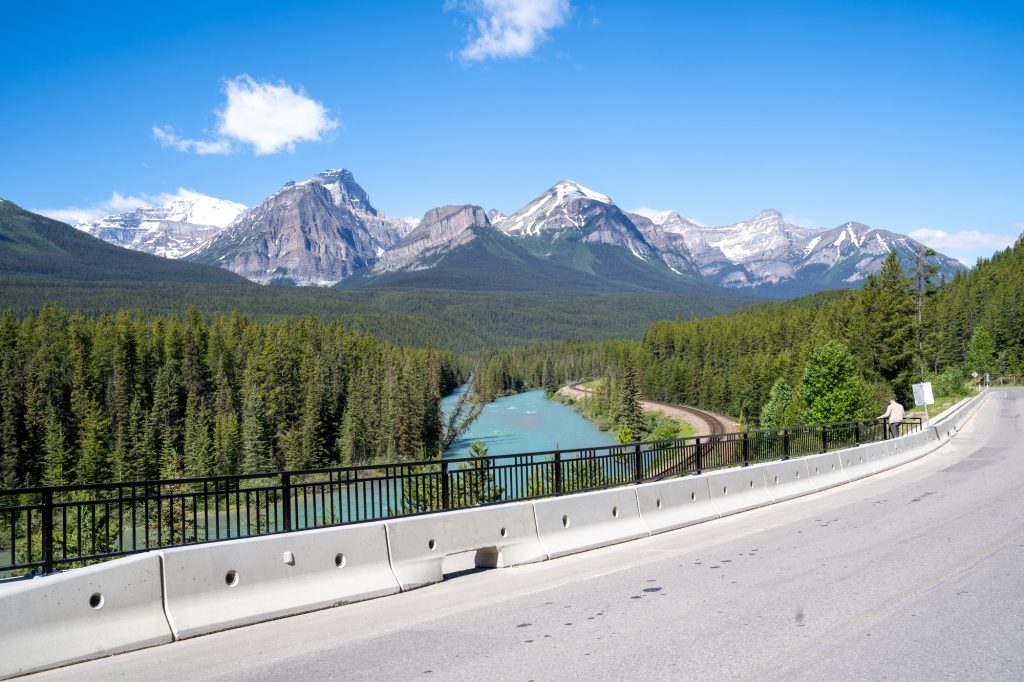
Morant’s Curve is accessible for most visitors, but be aware that the terrain might be challenging for those with mobility concerns.
Other Attractions Nearby
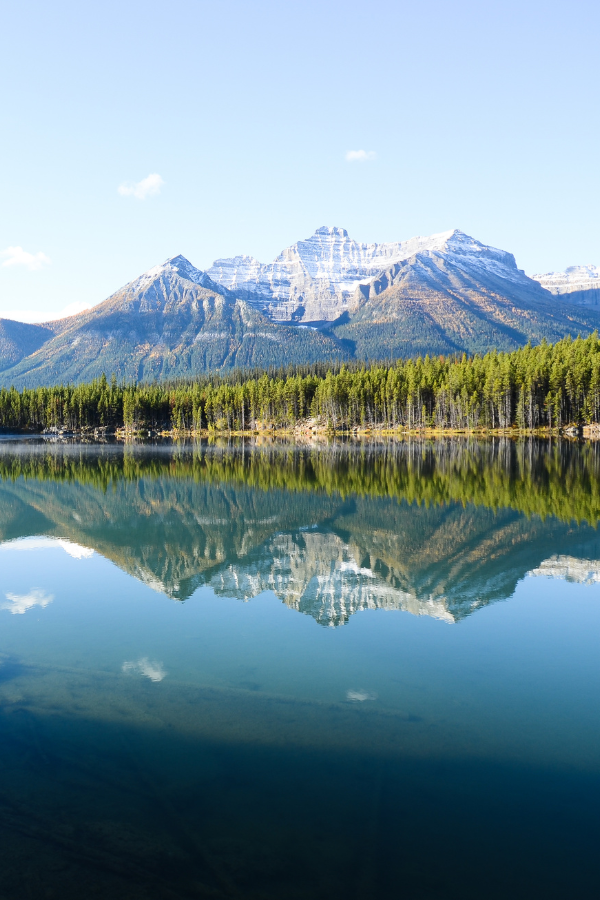
While Morant’s Curve is a highlight in itself, the Canadian Rockies offer an abundance of breathtaking sights and activities.
Morant’s Curve is a good stopover if you’re sightseeing along the Icefields Parkway.
Here are other notable attractions worth visiting near Morant’s Curve:
- Lake Louise
- Lake Louise sightseeing Gondola
- Herbert Lake
- Moraine Lake
- Castle Mountain
- Silverton Falls
- Johnston Canyon
Is Morant’s Curve Worth Visiting?
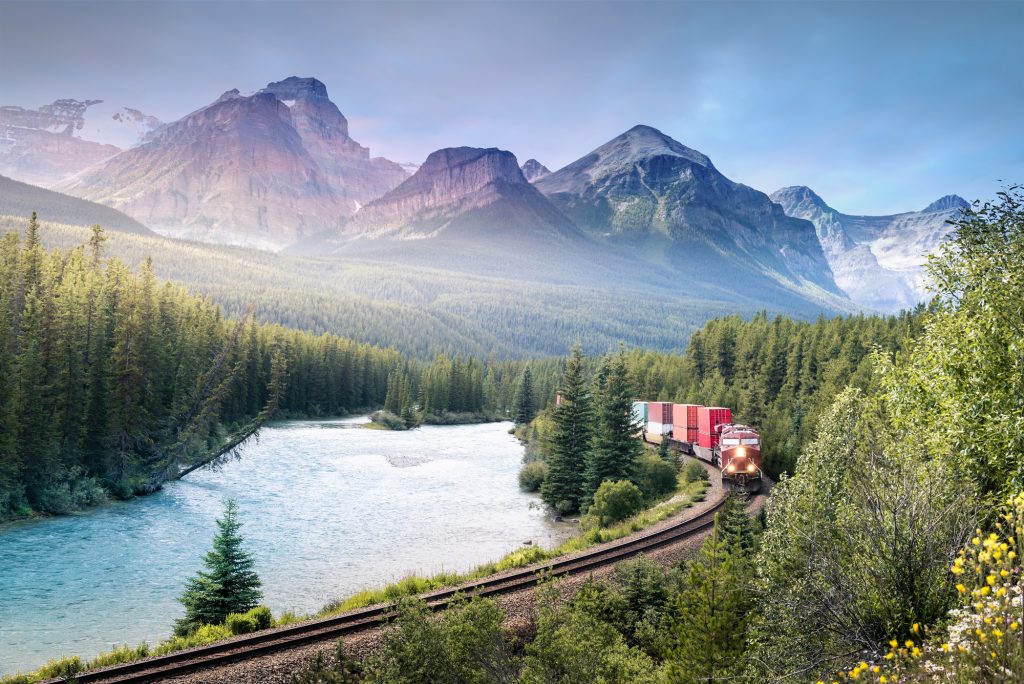
If you are traveling along the Icefields Parkway or planning to spend time between Banff and Lake Louise, Morant’s Curve is a worthwhile stop.
It’s the perfect spot to capture iconic photos of the Canadian rocky mountains, even if you don’t get lucky enough to see a train.
On top of that, this is actually a great area to see bears!
The entire Bow Valley Parkway is a beautiful stretch of road where you have a higher chance of seeing all kinds of wildlife.
If you will be passing by in the early morning or at dusk, skip the Trans-Canada Highway and hop on Highway 1A, which is not only a smoother road, it has much less traffic.
More Banff National Park Posts:
17 Banff Hidden Gems (that locals don’t even know about)
The Best Time to Visit Banff: the Pros and Cons of Each Season
9 Best Cheap Places to Stay in Banff (that are actually nice)
Travel Hacks For Visiting Banff in Winter
Banff vs Jasper: Which One Is Best For You? (Tips From a Local)

